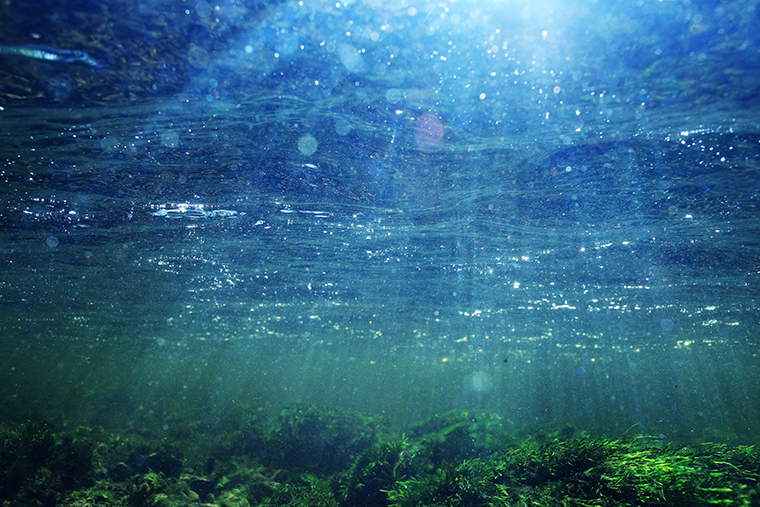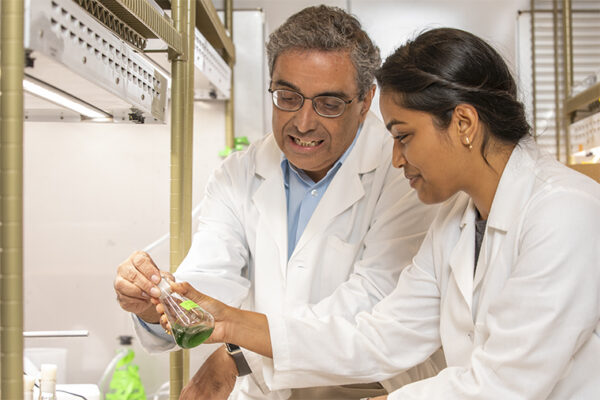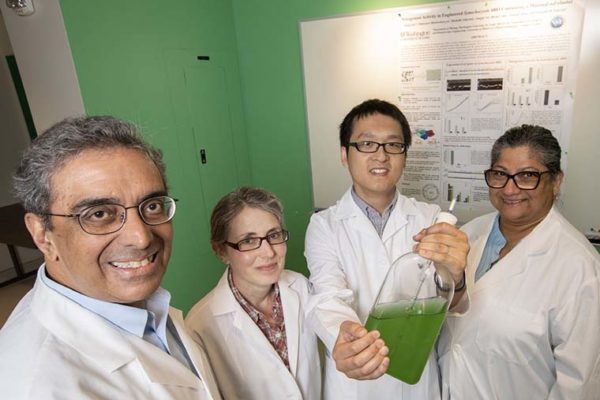Photosynthetic organisms tap light for fuel, but sometimes there’s too much of a good thing.
New research from Washington University in St. Louis reveals the core structure of the light-harvesting antenna of cyanobacteria or blue-green algae — including key features that both collect energy and block excess light absorption. The study, published Jan. 6 in Science Advances, yields insights relevant to future energy applications.
Scientists built a model of the large protein complex called phycobilisome that collects and transmits light energy. Phycobilisomes allow cyanobacteria to take advantage of different wavelengths of light than other photosynthetic organisms, such as green plants on dry land.
This capability significantly increases global productivity from photosynthesis from across the solar energy spectrum — but it is fraught with risk.
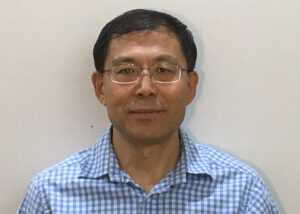
“For cyanobacteria, excess light absorption is inevitable — and sometimes lethal,” said Haijun Liu, research scientist in chemistry in Arts & Sciences at Washington University. Liu is the principal investigator and corresponding author of the new study, funded by the Department of Energy (DOE), Basic Energy Sciences.
“We’ve found interesting structural features in the interface where energy is transferred and regulated,” he said. “One of the regulatory processes called non-photochemical quenching is executed by a protein called orange carotenoid protein. A high-resolution structure of phycobilisome will allow us to understand such processes in detail.”
While researchers already knew that orange carotenoid protein helps protect cyanobacteria during high light conditions, they did not have a clear picture of all of the structural features at work.
They also did not know where and how orange carotenoid protein is sequestered in a living cyanobacteria cell.
“We were stunned when we first reached the current model,” Liu said. “We instantly noticed that an inactive orange carotenoid protein can actually get access to — or simply fit snugly in — the free space region between phycobilisome and PSII (the protein complex that receives energy from phycobilisome for photochemical reactions). Then it is ready to be recruited or activated by environmental cues.”
This structure was assembled by an all-Washington University team of analytical biochemists and structural biologists, including Himadri Pakrasi, the George William and Irene Koechig Freiberg Professor in Arts & Sciences.
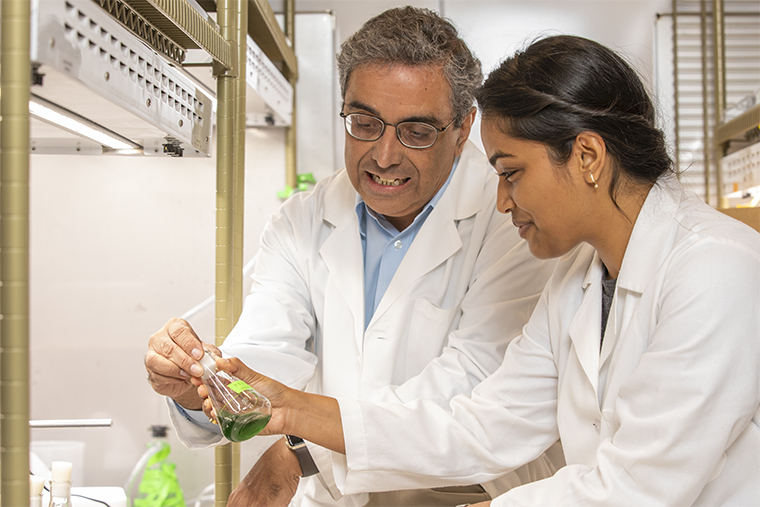
The team used structural proteomics in combination with structural modeling to resolve the structure. The method was first developed by Liu in Pakrasi’s lab a few years ago, in collaboration with members of a group led by Michael Gross, professor of chemistry in Arts & Sciences and of immunology and internal medicine at the School of Medicine. The unique platform they created gave them significant advantages over other labs that had attempted to approach similar biological questions with electron microscope, cryo-electron microscope and other techniques.
The basic science groundwork in this new research helps explain how living organisms maximize photosynthetic efficiency during early events of photosynthesis. This theme was also supported by the Photosynthetic Antenna Research Center (PARC) at Washington University — one of 46 DOE Energy Frontier Research Centers, formerly directed by Robert E. Blankenship, the Lucille P. Markey Distinguished Professor in Arts & Sciences Emeritus.
The new work will help future efforts to design biohybrid or synthetic systems that harness energy from light.
